Have you ever wondered if there’s more to our past than meets the eye? The idea that extraterrestrial beings influenced human history has sparked debates for decades. While mainstream science often dismisses these theories, shows like the History Channel’s *Ancient Aliens* have brought them into the spotlight.
One of the most influential works on this topic is Erich von Däniken’s *Chariots of the Gods?*. Published in 1968, it questioned whether advanced civilizations from other worlds visited Earth long ago. The book laid the foundation for modern ancient astronaut theories.
From the Egyptian pyramids to mysterious artifacts, many structures and discoveries remain unexplained. Could these be evidence of extraterrestrial contact? Or are they simply products of human ingenuity? Let’s dive into the fascinating world of ancient alien theories and explore what scientists might not be telling us.
Key Takeaways
- The *History Channel*’s *Ancient Aliens* series has popularized theories about extraterrestrial influence on Earth.
- Erich von Däniken’s *Chariots of the Gods?* is a foundational book in ancient astronaut theories.
- Many ancient structures, like the Egyptian pyramids, remain unexplained by mainstream science.
- Theories about ancient aliens blend mythology, archaeology, and speculative science.
- Debates continue over whether evidence of extraterrestrial contact has been suppressed.
Introduction to the Ancient Aliens Phenomenon
The idea of extraterrestrial beings shaping human history has captivated millions. From unexplained structures to myths of celestial visitors, the concept of ancient aliens has become a global phenomenon. But what exactly does this term mean, and why does it spark such curiosity?
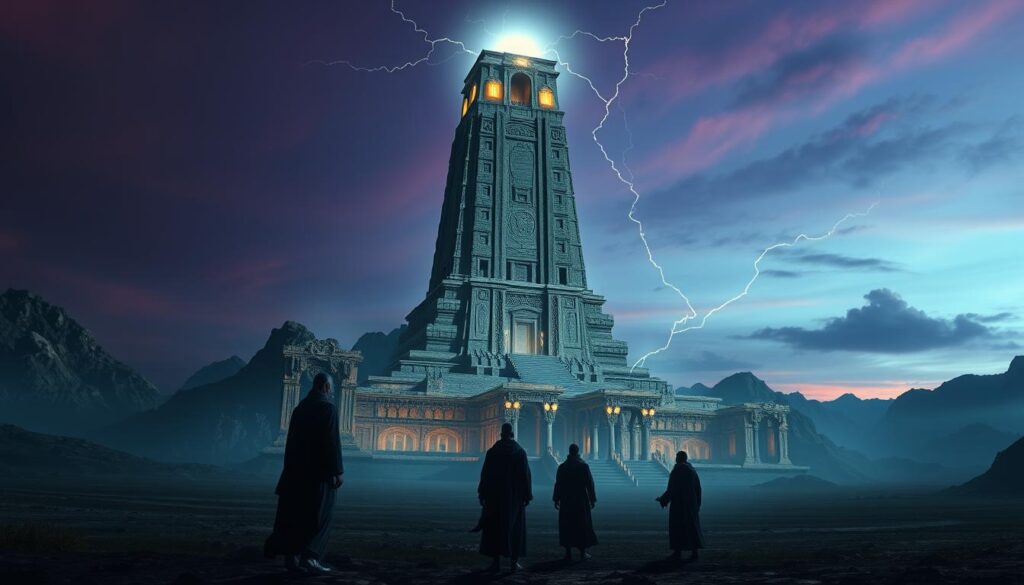
What Are Ancient Aliens?
The term refers to the theory that advanced beings from other planets visited Earth in the distant past. These visitors are believed to have influenced early humans, helping them build monumental structures and develop complex technologies. Shows like the History Channel’s *Ancient Aliens* have explored this idea in depth, examining evidence from around the world.
Why This Topic Sparks Curiosity
Humanity has always been fascinated by its origins. The *Ancient Aliens* series taps into this curiosity by exploring mysteries like the 12,000-year-old Ice Age civilizations. Giorgio Tsoukalos, a prominent figure in the show, often says, “Ancient astronauts theorists say yes!” This phrase has become a rallying cry for believers.
Cross-cultural myths also fuel this fascination. For example, Hindu texts describe flying machines called *vimanas*, while Sumerian legends speak of the Annunaki, gods who came from the heavens. These stories suggest a shared belief in extraterrestrial visitors.
Public intrigue is further highlighted by IMDb user reviews, with one stating, “Compelling and enjoyable… blows your mind.” This blend of history, mythology, and speculative science keeps audiences hooked.
| Key Points | Details |
|---|---|
| Series Episodes | 268 episodes since 2009 |
| Peak Viewership | Over 7 million viewers |
| Narrator | Robert Clotworthy |
For more insights into fascinating topics like this, check out our privacy policy.
The Origins of Ancient Alien Theories
The roots of extraterrestrial theories stretch back further than most realize. While modern shows like *Ancient Aliens* have popularized these ideas, their origins lie in books and research from decades ago. Let’s explore how these theories began and who shaped them.
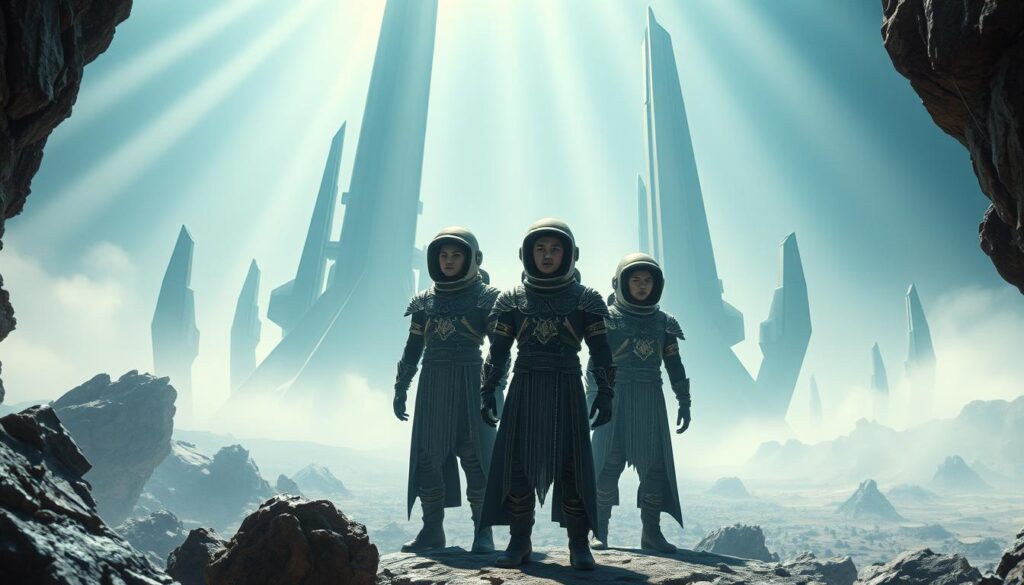
Erich von Däniken and “Chariots of the Gods”
Erich von Däniken’s *Chariots of the Gods?* is often considered the cornerstone of ancient astronaut theories. Published in 1968, the book suggests that advanced beings visited Earth years ago. Von Däniken claimed these visitors influenced early civilizations, helping them build structures like the Egyptian pyramids and Mesoamerican temples.
Despite selling over 65 million copies, the book faced criticism. Many scientists pointed out factual inaccuracies and speculative claims. Historian Ronald Fritze called it “pseudoscience with periodic popularity.” Yet, its impact on popular culture remains undeniable.
Early Influences on Ancient Astronaut Theory
Before von Däniken, other thinkers laid the groundwork for these ideas. Zecharia Sitchin’s *The 12th Planet* (1976) proposed that humans were genetically engineered by beings from a planet called Nibiru. This hypothesis later fueled modern conspiracy theories.
Graham Hancock and Robert Bauval also contributed to the discussion. Hancock’s “lost civilization” ideas and Bauval’s Orion Correlation Theory suggest that advanced societies existed long before recorded history. These theories often appear in shows like *Ancient Aliens*, where guests like David Childress expand on them.
| Key Figures | Contributions |
|---|---|
| Erich von Däniken | Author of *Chariots of the Gods?* |
| Zecharia Sitchin | Proposed the Nibiru hypothesis |
| Graham Hancock | Explored lost civilizations |
| Robert Bauval | Developed the Orion Correlation Theory |
While these ideas captivate many, mainstream science remains skeptical. The debate continues, blending mythology, archaeology, and speculative theories into a fascinating narrative.
Key Evidence Supporting Ancient Alien Visits
Mysterious artifacts and unexplained sites continue to spark debate. Could these be signs of extraterrestrial visitors? From precision-cut stones to objects that defy explanation, the evidence is both fascinating and controversial.
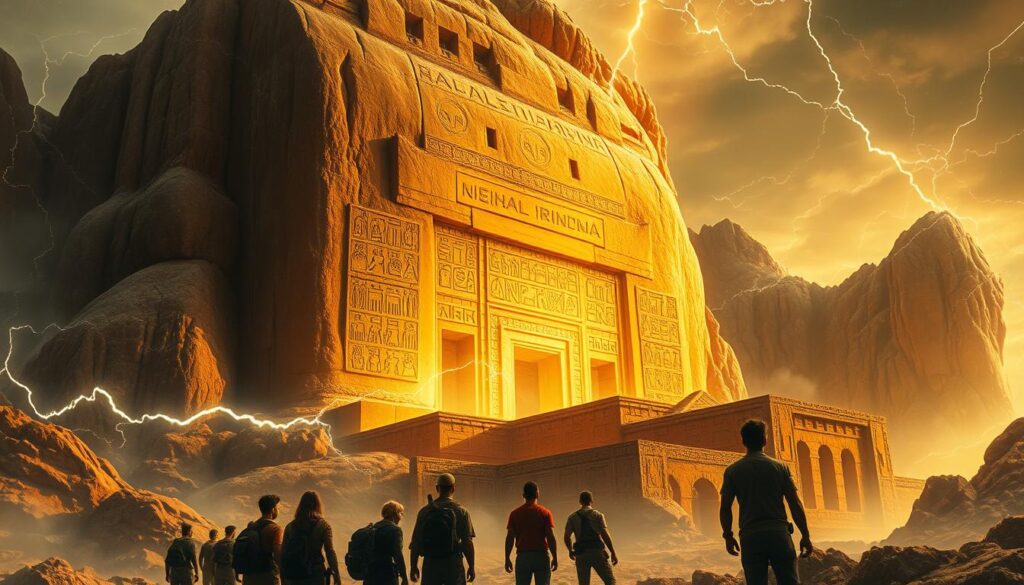
Unexplained Ancient Structures
Some structures around the world leave experts puzzled. Take Pumapunku in Bolivia, for example. Its stones are cut with such precision that modern tools would struggle to replicate them. Similarly, Teotihuacan in Mexico features a geometric layout that seems too advanced for its time.
Geologist Robert Schoch’s water erosion hypothesis about the Sphinx adds another layer of mystery. His research suggests the Sphinx could be much older than mainstream timelines indicate. These findings challenge our understanding of early humans and their capabilities.
Mysterious Artifacts and Their Origins
Artifacts like the Antikythera mechanism and the Aiud object are often cited as proof of advanced knowledge. The Antikythera mechanism, dating back to 150-100 BCE, is an ancient analog computer. The Aiud object, believed to be 250,000 years old, is made of aluminum, a metal humans couldn’t produce until the 19th century.
Another debated artifact is the London Hammer, found in Texas. Estimated to be 400 million years old, its origins remain unclear. Similarly, elongated skulls from Paracas, Peru, have been analyzed in DNA tests featured on *Ancient Aliens*. Some believe these skulls point to non-human origins.
However, critics argue that many of these artifacts lack peer-reviewed verification. Archaeologist Keith Fitzpatrick-Matthews has called such claims “nonsense treated as fact.” Despite the skepticism, these mysteries keep the conversation alive.
The Role of the History Channel’s “Ancient Aliens” Series
The *History Channel*’s *Ancient Aliens* has become a cultural phenomenon, sparking debates worldwide. Since its debut in 2009, the series has explored bold theories about extraterrestrial influence on human history. With 21 seasons and over 268 episodes, it has captivated millions of viewers.
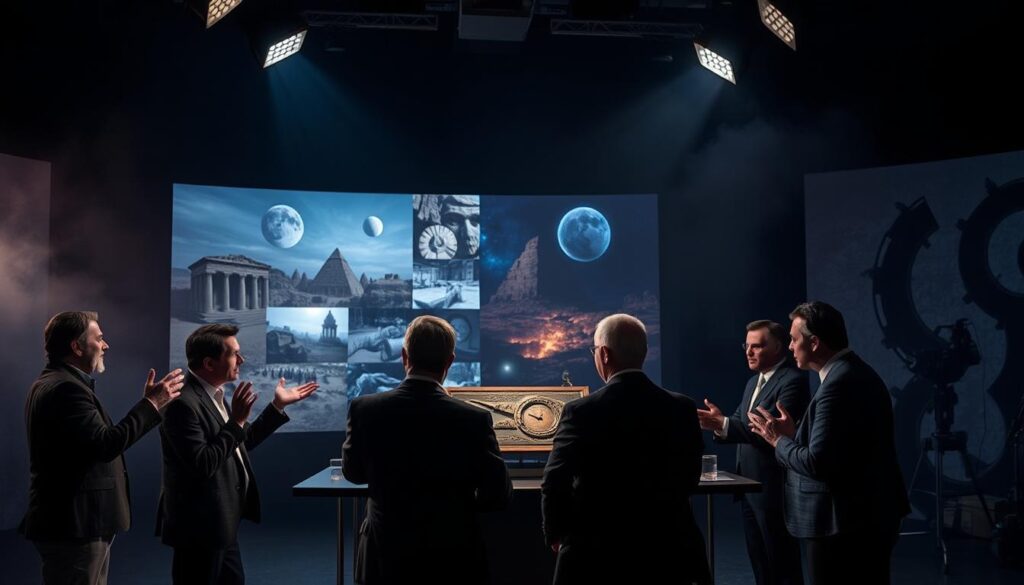
How the Show Popularized the Theory
The show introduced ancient astronaut theories to a global audience. Giorgio Tsoukalos, a consulting producer and frequent guest, became its face. His iconic phrase, “Ancient astronauts theorists say yes!”, became a rallying cry for believers.
The series uses a “Gish gallop” tactic, overwhelming viewers with rapid-fire claims. This approach keeps audiences engaged, even if some arguments lack scientific backing. The *History Channel*’s platform gave these ideas mainstream exposure, blending history, mythology, and speculative science.
Criticism and Controversy Surrounding the Series
Despite its popularity, the show has faced backlash. Scientists like Kenneth Feder have called it “execrable bullshit.” The *Smithsonian Magazine* criticized it for promoting pseudoscience. Critics argue that many claims lack peer-reviewed evidence.
The *History Channel*’s shift to H2 and back to its original network added to the controversy. However, the series remains a cultural touchstone. Its influence is evident in parodies like *South Park*’s “A History Channel Thanksgiving.”
| Aspect | Details |
|---|---|
| Seasons | 21 (as of 2024) |
| Episodes | 268 |
| IMDb Rating | 7/10 |
| Cultural Impact | *South Park* parody, widespread recognition |
Ancient Aliens and Human History
Could early civilizations have received help from beyond our world? This question lies at the heart of theories suggesting extraterrestrial influence on human history. From towering pyramids to intricate myths, many believe these wonders are too advanced to be purely human creations.
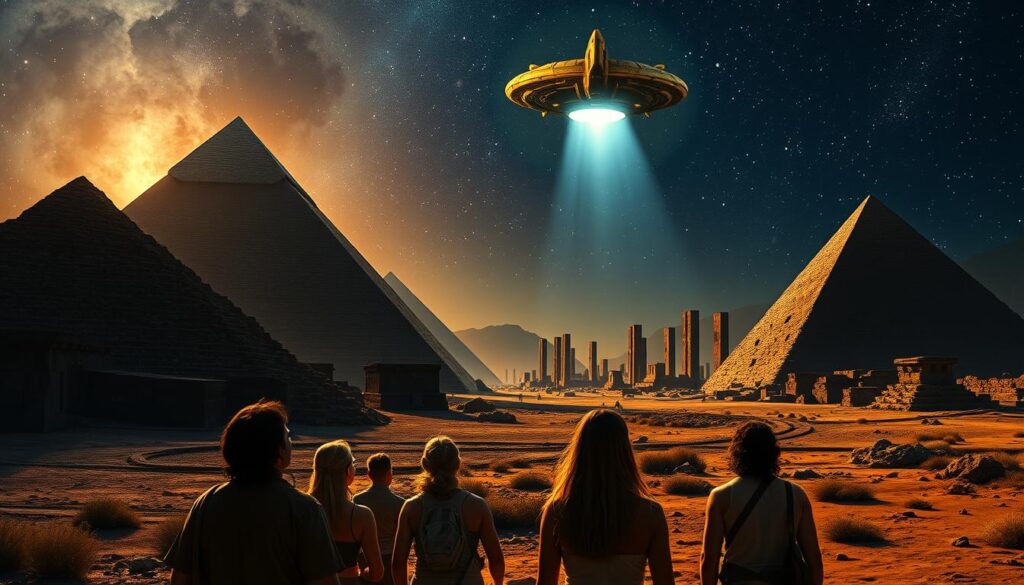
Did Aliens Influence Early Civilizations?
Pyramid-building cultures across the world share striking similarities. The Egyptians, Mayans, and Chinese all constructed massive stone structures with precision that baffles modern engineers. Some theorists argue that these shared techniques point to extraterrestrial guidance.
For example, the Great Pyramid of Giza aligns perfectly with the cardinal directions. The Pyramid of the Sun in Teotihuacan mirrors the layout of the solar system. These feats raise questions about how early humans achieved such accuracy without advanced tools.
The Connection Between Aliens and Mythology
Myths from different cultures often describe gods descending from the skies. The Greek god Zeus, the Hindu deity Vishnu, and the Mesoamerican Quetzalcoatl are all depicted as celestial beings. Some theorists suggest these stories are evidence of extraterrestrial visitors.
Psychologist Jonathan Young has analyzed mythic archetypes across 123 episodes of *Ancient Aliens*. He notes, “These recurring themes suggest a shared human experience, possibly influenced by encounters with advanced beings.”
However, not all claims hold up under scrutiny. The Dendera lightbulb and Baghdad Battery, often cited as proof of ancient technology, have been debunked by experts. These artifacts likely served different purposes than what theorists propose.
Despite the debates, the idea of extraterrestrial influence continues to captivate. Whether through myths or monuments, the connection between humans and the cosmos remains a fascinating topic.
Scientific Perspectives on Ancient Aliens
What do scientists really think about the idea of extraterrestrial influence on human history? While shows like *Ancient Aliens* have popularized these theories, the scientific community remains largely skeptical. Many experts argue that the evidence presented is often speculative and lacks peer-reviewed verification.

Why Scientists Are Skeptical
One of the main reasons for skepticism is the lack of concrete evidence. For example, NASA astrophysicist Sara Seager has debunked many claims made in early seasons of *Ancient Aliens*. She points out that there’s no physical proof, such as alien DNA or spacecraft remnants, to support these ideas.
Another issue is the principle of Occam’s razor. This principle suggests that the simplest explanation is usually the correct one. In this case, it’s more plausible that early humans built structures like the pyramids using their ingenuity rather than relying on extraterrestrial help.
Robert Schoch, a geologist whose work is often cited in ancient alien theories, has expressed frustration over how his interviews are edited out of context. He emphasizes that his research doesn’t support the idea of extraterrestrial intervention.
Counterarguments to Ancient Alien Theories
A 2020 study published in *Public Archaeology* labeled ancient astronaut theories as “misinformation.” The study highlighted that none of these claims have been published in peer-reviewed journals. This lack of academic validation is a significant red flag for the scientific community.
Brian Dunning, host of the podcast *Skeptoid*, has called these theories “a slap to human ingenuity.” He argues that attributing human achievements to extraterrestrials undermines the creativity and resourcefulness of early civilizations.
While the idea of ancient visitors is fascinating, it’s essential to separate fact from fiction. The scientific community continues to emphasize the importance of evidence-based research in understanding our past.
Ancient Aliens in Popular Culture
From blockbuster films to bestselling books, the idea of alien visitors has become a cultural staple. Media has played a significant role in shaping how we perceive extraterrestrial life, blending fact and fiction to create compelling narratives. The *Ancient Aliens* series is a prime example of this phenomenon, inspiring countless other shows, movies, and even video games.
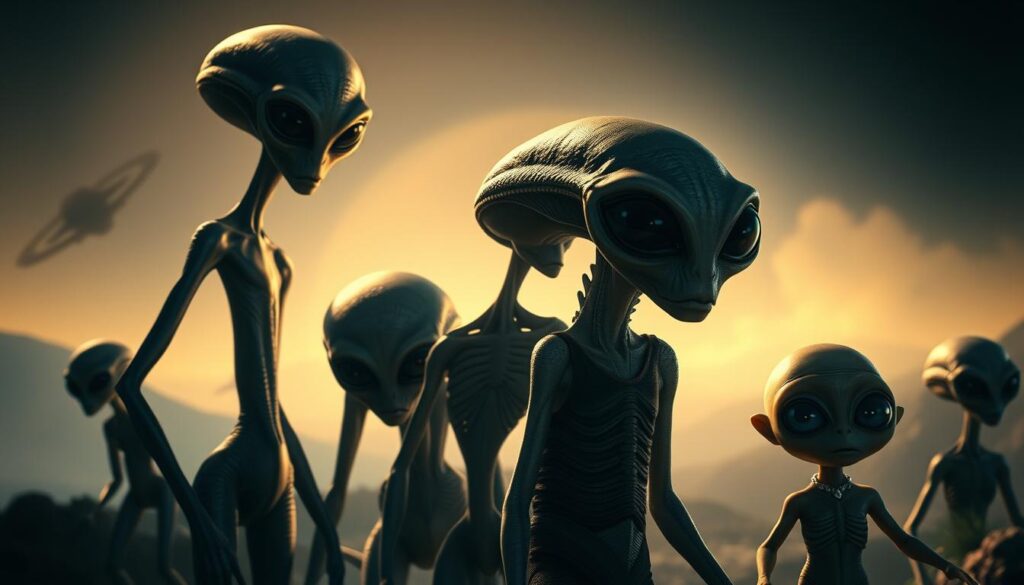
How Media Shapes Our Perception of Aliens
Shows like *Ancient Aliens* have introduced theories about extraterrestrial influence to a global audience. This series uses a documentary-style format to present speculative ideas as potential facts. While this approach captivates viewers, it also blurs the line between speculation and reality.
For example, *The UnXplained* and *Ancient Apocalypse* were directly inspired by the *Ancient Aliens* franchise. These shows continue to explore the idea that advanced beings may have visited Earth in the past. The blending of history, mythology, and science fiction keeps audiences engaged, even if some claims lack scientific backing.
Ancient Aliens in Movies, Books, and TV Shows
The influence of these theories extends beyond television. Films like *Stargate* (1994) and *Prometheus* (2012) directly reference Erich von Däniken’s ideas about extraterrestrial visitors. These movies explore the concept that early civilizations may have received help from advanced beings.
Video games like *Assassin’s Creed* and comic books have also embraced the “ancient aliens aesthetic.” This theme adds an element of mystery and intrigue to their stories, appealing to fans of speculative history.
George Noory’s *Coast to Coast AM* has further amplified these ideas, with over 80 episodes featuring discussions about extraterrestrial theories. This synergy between media platforms has solidified the concept of alien visitors in popular culture.
“Channel drift toward monsters and conspiracies.”
While these narratives are entertaining, it’s important to approach them critically. The blending of fact and fiction can sometimes lead to misconceptions about history and science. However, the enduring popularity of these stories highlights humanity’s fascination with the unknown.
Conspiracy Theories and Hidden Knowledge
What if the truth about our history is being kept secret? This question lies at the heart of many conspiracy theories surrounding extraterrestrial contact. From Area 51 to the Roswell incident, these ideas suggest that governments may be hiding crucial information about UFOs and alien encounters.
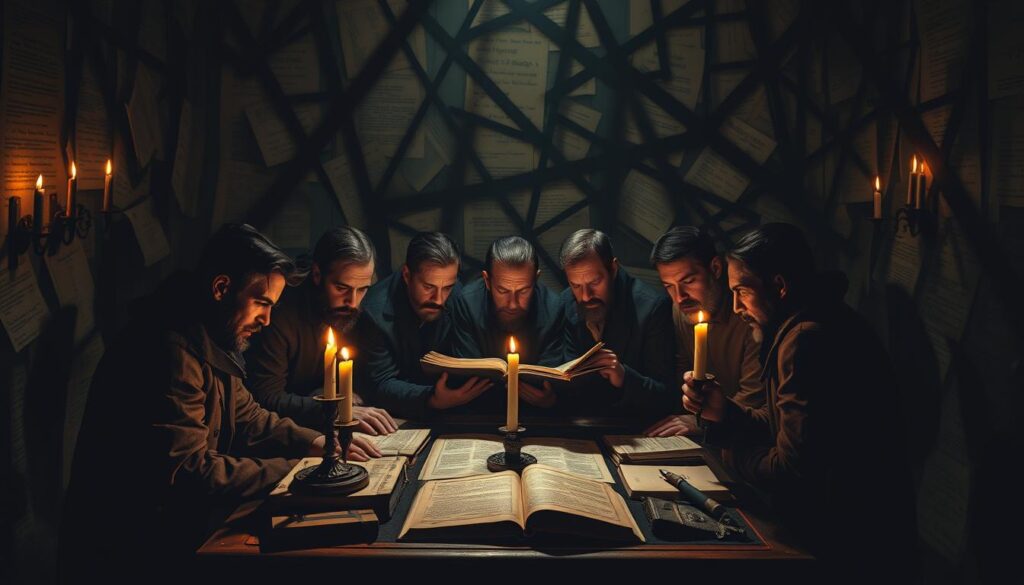
Season 14 of *Ancient Aliens* explored this theme in “The Nuclear Agenda,” linking UFOs to the 2013 Citizen Hearing on Disclosure. This episode highlighted how some believe that extraterrestrial technology could be tied to military advancements. A 2021 survey found that 60% of ancient alien theorists believe in CIA cover-ups, adding fuel to these claims.
What Are Governments Hiding?
Area 51 and the Roswell incident are often cited as proof of hidden knowledge. Area 51, a highly classified U.S. Air Force facility, has long been associated with UFO sightings and secret experiments. The Roswell incident, where a supposed UFO crashed in 1947, remains a cornerstone of extraterrestrial conspiracy theories.
Linda Moulton Howe, a prominent researcher, has made bold claims about a “military-alien base” in Antarctica. She suggests that governments are working with extraterrestrial beings in secret. While these ideas captivate many, they lack concrete evidence, leaving room for skepticism.
The Role of Conspiracy Theories in Ancient Alien Beliefs
Ancient astronaut theories often intersect with broader conspiracy movements. For example, some theorists connect these ideas to QAnon and flat-earth beliefs. This overlap raises questions about how these theories spread and gain traction.
Nick Pope, a former UK Ministry of Defence official, is one of the experts frequently featured on *Ancient Aliens*. His insights into government UFO investigations add credibility to the show’s narratives. However, critics argue that the series often exaggerates or misrepresents facts.
IMDb user reviews highlight this issue, with one stating, “Blatant lies about Sanskrit texts.” Despite the criticism, the show’s exploration of hidden knowledge continues to captivate audiences, blending history, speculation, and intrigue in a unique way.
Ancient Aliens and Religion
Could the divine beings of old actually be visitors from another world? This idea has sparked debates among scholars, theologians, and enthusiasts alike. The intersection of religion and extraterrestrial theories offers a fascinating lens through which to reinterpret ancient myths and sacred texts.
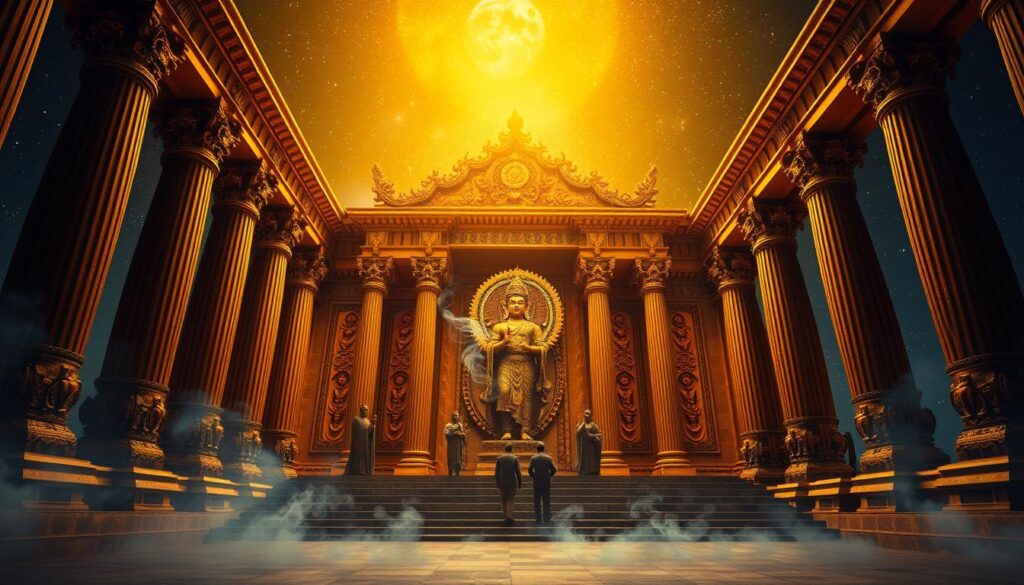
Are Ancient Gods Actually Extraterrestrials?
Many stories from ancient cultures describe gods descending from the skies. For example, the Bible’s Book of Ezekiel describes a vision of a “wheel within a wheel,” which some interpret as a spacecraft. Similarly, Hindu texts mention *vimanas*, flying machines used by deities.
Reverend Barry Downing has proposed that biblical angels were actually astronauts. He argues that their descriptions align with modern accounts of extraterrestrial encounters. This interpretation challenges traditional views of faith and divinity.
In Mormonism, the Kolob star theory suggests that God resides near a distant star. This concept has been featured in 12 episodes of *Ancient Aliens*, adding to the debate about celestial origins.
The Intersection of Faith and Extraterrestrial Theories
The blending of religion and extraterrestrial theories has led to the rise of UFO religions like Raëlism. These movements view extraterrestrials as creators or guides, reshaping traditional beliefs in a modern context.
Pope Francis’ 2014 statement that he would baptize extraterrestrials if they asked highlights the Vatican’s openness to the idea of alien life. This perspective bridges the gap between science and spirituality.
However, not all claims hold up under scrutiny. The Hindu *Mahabharata*’s descriptions of nuclear-like explosions have been debunked by historians. Yet, these stories continue to fuel speculation about advanced ancient knowledge.
| Key Theories | Details |
|---|---|
| Ezekiel’s Wheel | Interpreted as a spacecraft in *Ancient Aliens* |
| Kolob Star | Mormon belief featured in 12 episodes |
| Raëlism | UFO religion inspired by extraterrestrial theories |
“The blending of ancient myths and modern science offers a new way to understand our past.”
Modern-Day Evidence of Ancient Aliens
Recent discoveries have reignited debates about extraterrestrial influence on Earth. From advanced DNA analysis to government reports, new evidence is emerging that challenges traditional views. But what does modern science say about these claims?
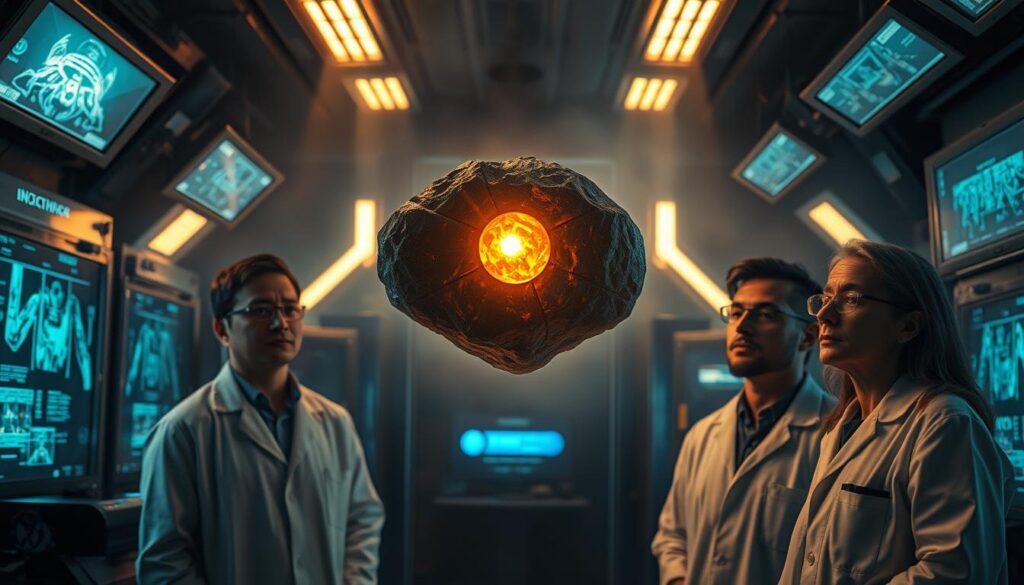
Recent Discoveries and Their Implications
Season 19 of *Ancient Aliens* featured MRI scans of Paracas skulls, revealing “unknown DNA markers.” These findings have sparked discussions about whether these skulls could belong to non-human origins. While intriguing, experts caution that more research is needed to draw definitive conclusions.
The Pentagon’s 2021 UAP report has also been cited in 8 episodes of the show. Although the report didn’t confirm extraterrestrial activity, it acknowledged unidentified aerial phenomena that remain unexplained. This has fueled speculation about hidden knowledge.
However, not all discoveries hold up under scrutiny. The 2020 Chilean “alien mummy” hoax was debunked by MIT researchers, who identified it as a human skeleton. Similarly, the “Sirius blue stone” analysis in Season 16 was deemed inconclusive by scientists.
What Modern Science Says About Ancient Alien Claims
Avi Loeb’s Galileo Project takes a scientific approach to UFO research. By using advanced technology to study potential extraterrestrial artifacts, the project aims to separate fact from fiction. Loeb emphasizes the importance of evidence-based research in this field.
SETI, the Search for Extraterrestrial Intelligence, maintains a clear stance: “No credible evidence of extraterrestrial visitors has been found.” This perspective is shared by many in the scientific community, who argue that extraordinary claims require extraordinary proof.
“Extraordinary claims require extraordinary evidence.”
While the idea of ancient visitors is fascinating, it’s crucial to approach these claims critically. Modern science continues to emphasize the need for rigorous investigation and peer-reviewed verification.
Why the Ancient Aliens Debate Matters
Why does the debate about extraterrestrial influence continue to captivate so many? From sparking curiosity to challenging established beliefs, this discussion has far-reaching implications. It’s not just about whether aliens visited Earth—it’s about how this idea shapes our understanding of history, science, and ourselves.
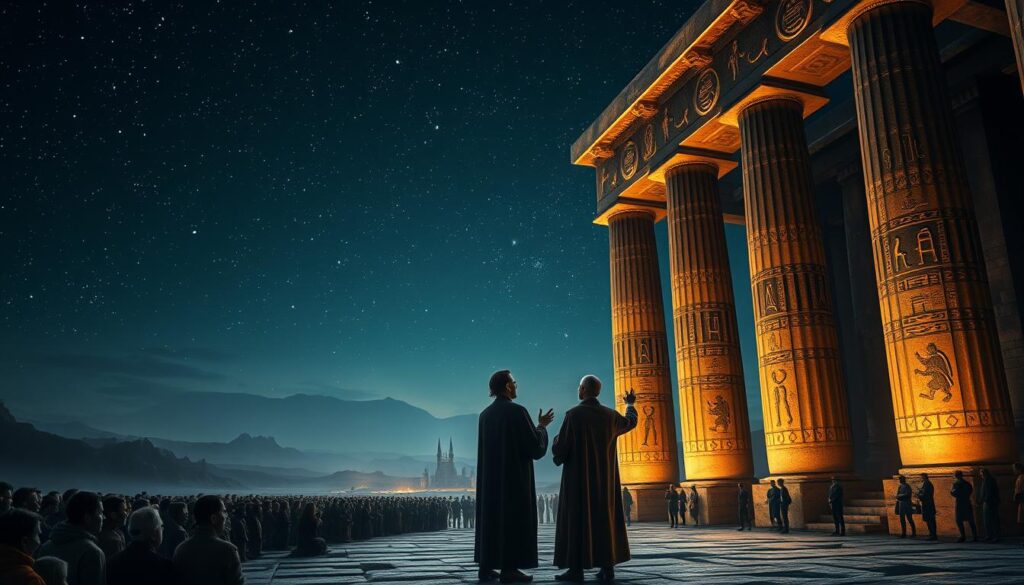
According to a 2022 Pew Research poll, 45% of Americans believe aliens have visited Earth. This statistic highlights the widespread interest in this topic. The *Ancient Aliens* series, translated into 42 languages and reaching over 150 countries, has played a significant role in fueling this fascination.
The Impact on Science and Society
Pseudoscience, while often criticized, can spark critical thinking. Shows like *Ancient Aliens* encourage people to question established narratives and explore alternative explanations. This curiosity has led to increased funding for archaeological sites like Göbekli Tepe, where new discoveries continue to challenge our understanding of early civilizations.
However, there are risks. Historical revisionism and anti-expert sentiment can distort facts. It’s essential to balance open-mindedness with a demand for evidence. As Giorgio Tsoukalos famously says, “We’re not saying it was aliens… but it was aliens!” This playful approach keeps the conversation engaging while reminding us to stay skeptical.
Why We Should Keep an Open Mind
Keeping an open mind doesn’t mean accepting every claim at face value. It means being willing to explore new ideas while demanding rigorous evidence. This balanced approach can lead to meaningful discoveries and a deeper understanding of our past.
For example, the global reach of *Ancient Aliens* has introduced millions to the concept of extraterrestrial influence. While not all claims hold up under scrutiny, the show has inspired people to learn more about archaeology, mythology, and science.
| Key Data | Details |
|---|---|
| Americans Believing in Alien Visits | 45% (2022 Pew Research) |
| *Ancient Aliens* Languages | 42 |
| Countries Reached | 150+ |
In conclusion, the ancient aliens debate matters because it challenges us to think critically and stay curious. By questioning narratives and seeking evidence, we can uncover new insights about our world. To learn more about our approach to these fascinating topics, visit our about page.
Conclusion: The Enduring Mystery of Ancient Aliens
The debate over extraterrestrial influence blends imagination with scientific inquiry. While shows like *Ancient Aliens* captivate fans with bold claims, they often lack empirical rigor. This tension between creativity and evidence keeps the conversation alive.
Despite its flaws, the series offers entertainment value. It sparks curiosity and encourages viewers to question conventional explanations. For many, it’s a way to explore mysteries beyond the ordinary.
As a fan or critic, reviewing these theories critically is essential. It’s a reminder to balance open-mindedness with a demand for evidence. After all, as Arthur C. Clarke once said, “Any sufficiently advanced technology is indistinguishable from magic.”

